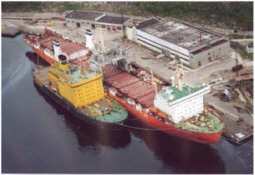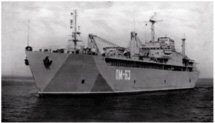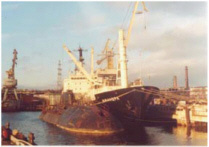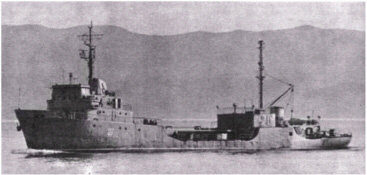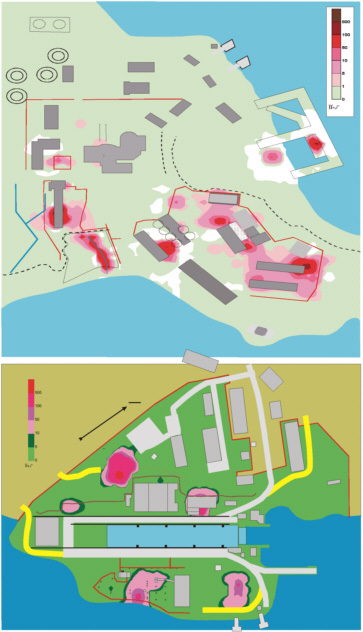H
Development of a Strategic Master Plan for Disposition of Decommissioned Russian Nuclear-Powered Fleet and Rehabilitation of Hazardously Radioactive Sites and Facilities of Its Support Infrastructure
S. Antipov, L. Bolshov, and A. Sarkisov1
Over the course of the last 20 years, a lot of work has been done in Russia to increase the safety of the nuclear power industry, dispose of excess nuclear weapons stockpiles, and resolve a multitude of environmental problems that had piled up over the many years of the Cold War. In this work, domestic resources have been used alongside active technical and financial assistance that came from foreign countries interested in boosting their own sense of safety and security and mitigating the contamination hazard to their own territories. Quite often, however, the use of foreign aid stemming from bilateral and multilateral agreements has been impeded by a whole host of objective and subjective factors which inevitably affected the outcome.
The international community has developed an appreciation for the fact that the effective use of international financial aid provided to the Russian Federation to effect strategic arms reductions compliant with relevant international agreements, as well as to overcome the major environmental challenges which materialized as a legacy of many years of the Cold War, does, indeed, warrant solid scientific analyses and justification. One of the first examples of such a multifaceted international collaborative investigation into an issue was the development of a strategic master plan (SMP) for disposition of some of Russia’s nuclear fleet and rehabilitation of hazardously radioactive infrastructure in the Russian Northwest. The objective of the plan was to provide rationale for undertaking some high-priority projects and engaging in some activities of critical significance.
The authors believe that the valuable experience acquired during the development of the SMP and in the course of the initial stages of its implementation may be instructive and useful in other areas of bilateral and multilateral cooperation in science and technology.
International cooperation in science and technology is carried out by initiating and implementing programs and projects in various subject areas. In each particular case, the program’s success depends on a variety of factors, one of which is application of a systemic approach. A systemic approach implies linking all elements that characterize technical, technological, and organizational features of the programs. Areas of work and final goals, work sites, particular tasks and projects, as well as actions, deadlines, and many other parameters should be arranged into a unified, interrelated system.
The entire conglomerate of physical sites, related technologies, transportation routes, a whole host of natural and sociopolitical factors, as well as external limitations that are imposed by the enterprises that are part of nuclear fuel cycle and that are involved in complex disposition, represents an example of a complex system that requires systemic analysis. In carrying out this analysis, priorities should be given to issues of human safety, the security of the nuclear and the radioactive materials, and risk analyses.
ESSENCE AND SCOPE OF THE PROBLEM
The Cold War and the years of the arms race brought about a quantitatively and qualitatively unparalleled Soviet nuclear-powered fleet and a well-developed sea-based and coastal support infrastructure. Examples of nuclear-powered vehicles in the Russian fleet appear in Figures 1 through 9.
In total, the number of nuclear reactors installed exceeded 450; their cumulative power output was comparable to that of all nuclear power plants of the country.
In the late 1980s and in the 1990s, Russia ran into a serious problem: nuclear fleet decommissioning began en masse. The main reasons were the expiration of the nominal service lives of ships and vessels and the need to fulfill the Strategic Arms Reductions Treaty (START) obligations.
The total numbers of ships and vessels with nuclear-powered propulsion systems are as follows:
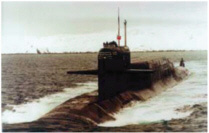
FIGURE 1 Nuclear-powered missile submarine (Delta I).
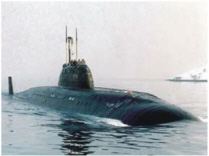
FIGURE 2 Nuclear-powered attack submarine with a water-moderated, water-cooled reactor (Victor II).
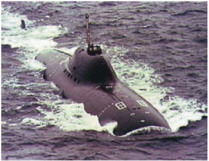
FIGURE 3 Nuclear-powered attack submarine with a liquid metal-cooled reactor (Alpha).
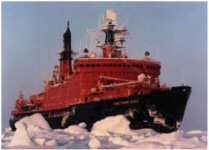
FIGURE 4 Icebreaker Sovetskiy Soyuz.
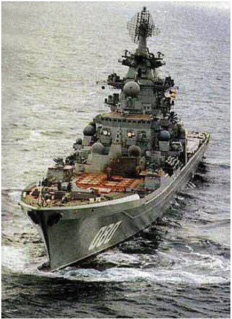
FIGURE 5 Nuclear-powered cruiser Pyotr Velikiy.
-
Nuclear-powered submarines = 248
-
Surface ships with a nuclear-powered propulsion system = 5
-
Nuclear-powered icebreakers = 8
-
Nuclear-powered container ships = 1
The schedule for decommissioning of the Russian Navy’s nuclear-powered submarines is depicted in Figure 10.
Implementation of a practicable solution of such a topical problem as disposition of the nuclear-powered fleet and its support infrastructure has become much more challenging because of a confluence of the following circumstances:
-
Rapidity of decommissioning of nuclear-powered submarines;
-
Lack of preparedness, on the part of the industrial infrastructure, to handle massive numbers of ships and vessels subject to disposition; and
-
Severe economic depression brought about by the economic reforms of the time and, as a consequence, an inability to secure adequate budgetary funding for the disposition effort to move forward.
An important aspect of the situation at hand is the environmental impact of the nuclear fleet subject to disposition. This causes concerns not only in this country but also within the international community as a whole. These concerns have unique implications in the context of a globalized role played by the Arctic region.
The present radiological and environmental situation in the region and the problems that it entails constitute a direct heritage of the Cold War.
The most significant contributor to the present level of regional contamination was the global fallout resulting from nuclear weapons testing (1016 becquerels [Bq]). An appreciably smaller share (less than 1015 Bq) can be ascribed to liquid radioactive waste dumps which had taken place prior to Russia’s de facto joining the 1993 agreements regarding a comprehensive prohibition on the disposal of radioactive waste at sea. The nuclear fleet and support infrastructure facilities to be dispositioned have contributed about 1014 Bq. Ever since nuclear weapons testing was stopped, gradual improvement has been taking shape across the expanse of Artic seas as a whole.
However, the presence of a considerable amount of spent nuclear fuel on nuclear-powered submarines, coastal servicing bases, and other facilities subject to a multipronged disposition effort represents a substantial potential hazard. The levels of radioactivity at disposition sites are almost 40 times higher than those that result from nuclear weapons testing. The situation is further aggravated by the highly compact spatial concentration of the radiation potential accumulated in Russia’s northwestern region. This can be visualized very well by looking at Figure 11. Figure 12 depicts disposition sites and the radiation level profile along the Barents Sea shore in the vicinity of Murmansk.
While the improvement of overall radiological and environmental situation in the seas up North is obvious, recent years have seen increasingly salient localized sources of radionuclide contamination in places used for the laying up, disposition, and maintenance of nuclear-powered ships and vessels. As an example, Figure 12 depicts the concentrations of technogenic radionuclides in seabed sediments in spots collocated with decommissioned nuclear-powered ships and support infrastructure. As can be seen in Figure 12, the concentration of 60Co in some locales is 30 to 70 times the natural background, and the concentrations of 137Cs exceed the norm by factors of hundreds and thousands. Although at present even these levels do not really constrain economic activity in the region as a whole, the negative effects on the environment will, if the problem is not attended to through a series of preventive measures, become increasingly more
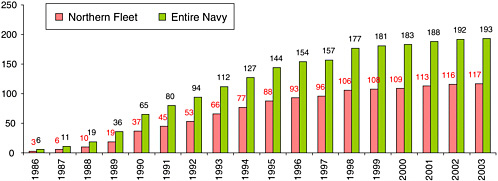
FIGURE 10 Schedule for decommissioning of the Russian Navy’s nuclear-powered submarines.

FIGURE 11 Radiation level profiles at disposition sites in the Russian Northwest.
pronounced because of the continually deteriorating condition of the nuclear-powered ships and vessels and their servicing and maintenance infrastructures.
It needs to be pointed out that alongside the mean levels of contamination—which are still acceptable—there already exist rather significant spikes in certain spots, where the values lie far outside of the range of the acceptable norm. The coastal servicing bases in Andreeva Bay and in Gremikha serve as but a few specific examples of such excessive values. The compounds of these bases and the exterior surfaces of buildings and structures feature some highly contaminated spots. In isolated areas of the Andreeva Bay base, the effective dose rate, surface contamination, and specific concentrations of 137Cs and 90Sr exceed the natural background by a factor of tens of thousands. An equally unfavorable environmental situation is the case at some facilities at the Gremikha base.
The present state of affairs in the field of the multifaceted disposition of nuclear-powered submarines is characterized by the following statistics:
-
None of the 117 nuclear-powered submarines decommissioned in the Northwest has been dispositioned completely, that is, all the way to placement of the reactor compartment in long-term, controlled shore-based storage. Facilities for such storage conditions have not been set up yet.
-
The 56 nuclear-powered submarines and 62 reactor units are kept afloat awaiting disposition. As such, they warrant continuous monitoring of their floatability, while their technical condition continues to deteriorate.
-
A great amount of spent nuclear fuel and radioactive waste is confined at the two former coastal servicing bases in Andreeva Bay and Gremikha. Even though the true condition of these bases is not quite clear, the compounds of these two bases are in need of a large-scale rehabilitation effort.
-
Remaining open is the task of the disposition of a large number (23) of nuclear servicing vessels and one surface ship with a nuclear-powered propulsion system berthed at a pier in the port of Severodvinsk.
-
Awaiting custom-tailored solutions and unique technological approaches is the issue of management of spent nuclear fuel from liquid metal reactors, defective or dam-
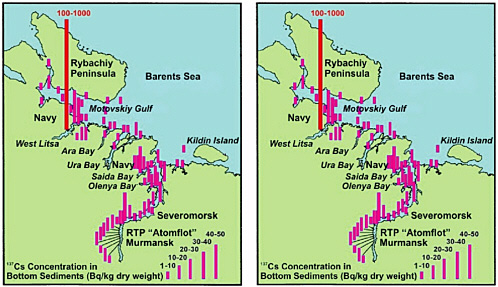
FIGURE 12 Concentrations of technogenic radionuclides in seabed sediments in spots collocated with decommissioned nuclear-powered ships and the support infrastructure.
-
aged fuel from the water-moderated, water-cooled reactors of nuclear-powered submarines, and uranium-zirconium fuel from nuclear icebreaker reactors.
-
Decisions regarding where to situate regional disposal sites for solid radioactive waste and where to build the requisite infrastructure have not yet been made.
MAIN OBJECTIVES AND CONTENTS OF THE STRATEGIC MASTER PLAN
According to estimates of the Russian Federal Agency for Atomic Power (Rosatom), about US$4 billion will be required to complete Russian nuclear-powered fleet disposition activities in the Northwest and Far East in the 2010 to 2012 time frame. Currently, federal budget appropriations equal US$70 million annually. At such a level of funding, it may take 40 to 50 years to complete these activities, which is absolutely unacceptable given the increasingly worsening states of the ships and vessels. Loss of buoyancy and gradual disintegration of levels of containment may lead to a realistic hazard of large-scale environmental contamination. Besides, the cost of activities will inevitably climb because of the need to develop new technical solutions to handle destroyed fuel assemblies and because of the increasing complexity and scale of the rehabilitation activities. Therefore, the aid provided to the Russian Federation within the framework of bilateral and multilateral international cooperation is seen as all the more indispensable.
Information regarding funding secured for the disposition of nuclear-powered submarines since 1999—with international sources of financing singled out—is given in Figure 13. As Figure 13 suggests, international aid has not been on any significant rise over the last six years.
Keeping in mind the amount of domestic funding allocated by Russia for disposition activities and realizing that a dramatic increase in the amount of this funding is not to be expected in the near future, one clearly sees that resolution of the problem in the next 10 years will be possible only if international aid is available.
The issue of the disposition of decommissioned Russian nuclear-powered submarines and the management of spent nuclear fuel and solid nuclear waste at coastal facilities is one of the key parts of the 10-year program entitled G-8 Global Partnership Against the Spread of Weapons and Materials of Mass Destruction, which was adopted by the G-8 leaders in Kananaskis, Canada, in June 2002.
In this context, one extremely important aspect of international cooperation is the legal groundwork for and the support of this cooperation. In recent years, a series of requisite documents has been signed here.
The first is the Agreement on Multilateral Nuclear Environmental Program in the Russian Federation (MNEPR), signed by Russia with 10 countries, the European Union, and EURATOM in Stockholm, Sweden, on May 21, 2003. This is a universal legal instrument that can be used to resolve a whole host of practical issues. By as early as the end of 2003, it had already been ratified by virtually all member states—including Russia—for which ratification is a legally mandated requirement.
The Agreement on Multilateral Nuclear Environmental
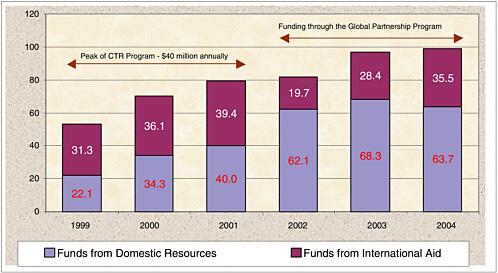
FIGURE 13 Funding comprehensive disposition activities through domestic resources and international aid.
Program in the Russian Federation became a logical continuation of the 2001 initiative undertaken by European states and Russia, entitled Northern Dimension Environmental Partnership (NDEP). Its goal is to unite the efforts of its member states to tackle environmental problems in the Northwest. To implement this initiative, a dedicated Support Fund was set up. Donor nations (such as NDEP member states, as well as other countries willing to take part in resolving these issues) have been contributing moneys to this Fund. The Fund runs two “windows”: a “nuclear window” designated to address nuclear environmental problems (including the disposition of nuclear-powered submarines) and a “non-nuclear window” to resolve generic environmental issues. The Foundation uses a specialized mechanism to select and prioritize projects for each of the windows. The European Bank for Reconstruction and Development (EBRD) acts as administrator of the NDEP Support Fund. The Agreement on Multilateral Nuclear Environmental Program in the Russian Federation has set up a legal groundwork for NDEP project implementation. The SMP development project is the first project undertaken in the “nuclear window.”
Under current conditions, it is particularly important that material resources not be wasted. First of all, they should be focused on the most pressing tasks of disposition and environmental rehabilitation. In this context, it is especially critical that the choice of disposition priorities be justified. Therefore, in late 2003, the EBRD and the Russian Ministry for Atomic Energy (now known as Federal Agency for Atomic Energy) initiated a project entitled “Development of a Strategic Plan (also known as the “Master Plan”) for Disposition of Decommissioned Nuclear-Powered Submarines, Surface Ships with a Nuclear Propulsion System, Nuclear Servicing Vessels, Nuclear-Powered Icebreaker Fleet, and for Environmental Rehabilitation of Hazardously Radioactive Facilities in the Russian Northwest.” Three leading institutes with a core competency in this field have been tasked to collaborate on this project. They are the Nuclear Safety Institute of the Russian Academy of Sciences (IBRAE RAS), the Kurchatov Institute (RRC KI), and the Research and Development Institute of Power Engineering (NIKIET). More than 50 experts representing these institutes and other organizations have taken part in this work.
The goal of the first phase of the project was to justify the high-priority objectives that should be undertaken immediately. In addition, it was proposed to take this one step further and formulate specific high-priority activities (projects).
The following are proposals regarding the role and place of the SMP in the context of existing Russian legislation. They have been coordinated with the Federal Agency for Atomic Energy. It is proposed that the SMP should
-
Serve as the basis for disposition and rehabilitation project selection from both the decommissioned Navy and civil nuclear-powered fleet;
-
Serve as the basis for strategic decision making by the government of the Russian Federation regarding disposition and rehabilitation, as well as the management of spent nuclear fuel and radioactive waste;
-
Assist donor nations in conducting feasibility studies for disposition projects, including those which seek to increase nuclear, radiation, and environmental safety and improve physical protection;
-
Promote balanced and justified decision making with due regard to the interests of the Russian Federation and donor nations; and
-
Bring coordination into actions, verify their consistent focus, and monitor the results at all stages of implementation.
The SMP was developed in close contact and collaboration with the Federal Agency for Atomic Energy (which, according to a Russian Government resolution, acts as the customer and coordinating authority for the multipronged disposition activities), the Russian Navy, a major Russian shipbuilding company (Rossudostroyenie), the Federal Agency for Industry, and other involved agencies and organizations. The objective of the SMP is to optimize activities that would rid, in as speedy a fashion as possible, the population and the environment of the Russian Northwest of nuclear, radiation, and chemical hazards, while also taking into account the interests of adjacent territories and Europe as a whole.
This document consists of six interrelated sections (tasks), all of which are geared toward achievement of the end objective: to specifically identify high-priority activities (projects). Structural interlinkages among tasks accomplished at the initial stage of the SMP development process and an outline of the resultant report are depicted in Figure 14.
Compared to all previous conceptual documents, the SMP has a few important distinctions:
-
Even though the SMP is addressed to Rosatom and was compiled in close contact and collaboration with the agency, it is not an agency-specific document because many of the participating organizations do not report to ROSATOM.
-
The document for the first time comprehensively addresses the issues of the disposition and environmental rehabilitation of not only the Navy’s ships and facilities but also those of the closely related civil nuclear-powered icebreaker fleet.
-
The document is characterized by a high degree of openness, which is a function of both the amount of information that it spells out and the expected broad distribution.
-
The document for the first time directly formulates the tasks of putting high priority on the all-inclusive entirety of items, tasks, activities, and specific projects.
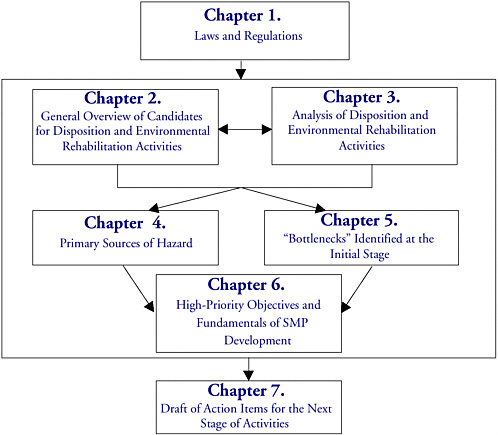
FIGURE 14 Structural interlinkages among tasks of the initial stage of the SMP.
STATUS OF THE REGULATORY AND LEGAL FRAMEWORKS REGARDING DISPOSITION OF NUCLEAR-POWERED FLEET
The first task summarizes, in a systemic and analytic way, a wide variety of documents governing the implementation of the activities envisioned in the SMP. The degree to which the legal framework is complete and adequate will determine how efficiently the disposition and rehabilitation activities will be organized, planned, and executed—from the level of international cooperation all the way through the level of individual production enterprises.
Overall, the regulatory and legal frameworks of the Russian Federation are in compliance with the generally accepted approaches to ensuring nuclear, radiation, and environmental safety, as well as to the management of radioactive waste and spent nuclear fuel. This bodes well for the prospects of international cooperation in the field of the multifaceted disposition of nuclear-powered submarines. The existing body of Russian law provides for safe planning and implementation of disposition activities and environmental rehabilitation of coastal facilities, territories, and waters affected by radiation.
At the same time, analysis of the existing legal and regulatory environment has revealed a number of legal shortfalls and issues of concern, the main of which are the following:
-
The federal law “On Use of Atomic Energy” does not apply to military-use nuclear propulsion systems, and the federal law that is meant to complement it (“On Military-Use Nuclear Propulsion Systems”) has not yet been passed.
-
The radiological safety of the environment is regulated by, among other things, the federal law “On Environmental Protection.” The issue of what could serve as the norm of radiation properties of natural objects has not been resolved. Some of the provisions of the law “On Environmental Protection” contradict the existing body of Russian law and the practical realities of ensuring radiological protection of the environment. In compliance with current recommendations of the International Commission on Radiological Protection (Publication 60), both the existing body of law and practice go by the mantra from sanitation and hygiene: “If the man is protected through the radiological standards, then the environment is also protected.”
-
Russian law does not define spent nuclear fuel as a stand-alone item subject to regulation.
-
Some provisions of other pieces of legislation which regulate the issues of radiation and environmental safety need to be revisited. Examples here would be the Water Code of the Russian Federation and the law “On Radiation Safety of the Population.”
-
The Joint Convention on the Safety of Spent Fuel Management and on the Safety of Radioactive Waste Management signed in 1998 still has not been ratified. Also, there is no law “On Management of Radioactive Waste and Spent Nuclear Fuel.”
-
The regulatory environment governing the issues of low-activity and medium-activity solid radioactive waste management requires further work and expansion.
-
Procedures for the adoption by the Russian Federation of amendment LC/51 and the 1996 Protocol to the London Convention on the Prevention of Marine Pollution by Dumping of Wastes and Other Matter have not been implemented.
-
The Vienna Convention on Civil Liability for Nuclear Damage was ratified in March 2005. However, the federal law “On Liability for Nuclear Damage” has not been passed. The law establishes liability for causing nuclear damage and spells out a regulatory mechanism for financial recovery of the damage (including government guarantees). It also covers international cooperative projects and international technical assistance.
Comprehensive analyses of the legal and regulatory environment in the field of multifaceted disposition have been put at the core of the following overarching conclusions and specific proposals for its further improvement:
-
In general, Russia’s existing legal and regulatory environment ensures the safety of multifaceted disposition operations and is conducive to international cooperation in this area. It is also compliant with the international standards (rules and norms) underpinning nuclear and radiation safety.
-
The main future milestones in the improvement of the legal and regulatory environment in the field of multifaceted disposition are as follows:
-
To pass the above-mentioned legislation for the peaceful and military uses of nuclear energy;
-
To introduce changes into the Russian Tax Code, Customs Code, and Budget Code and advance the mechanism for implementation of the already existing norms (as a continuation of the Agreement on Multilateral Nuclear Environmental Program in the Russian Federation);
-
To ratify the 1998 Joint Convention on the Safety of Spent Fuel Management;
-
To ratify the Vienna Convention on Civil Liability for Nuclear Damage; and
-
To develop region-specific legislation and legal and regulatory provisions at the local level that would provide tax benefits for those entities which provide free assistance to Russia.
-
-
In addition to the above-mentioned milestones in the improvement of the top-level legal and regulatory environment, the following measures are deemed prudent:
-
To consider the possibility and the need for amending “Main Sanitary Rules for Ensuring Radiation Safety” (OSPORB-99) to additionally include the category of “very-low-activity radioactive wastes”;
-
To develop and commission, in compliance with the existing process, functional requirements and criteria for accepting radioactive waste for final disposal. Make this a clarification to the “Sanitary Rules for Radioactive Waste Management” document (SPORO-2002);
-
To formulate criteria for complete rehabilitation of the former coastal servicing bases of the Navy’s Northern Fleet; and
-
To update (i.e., bring into compliance with the Russian government’s decisions regarding the functions of the federal executive branch) the procedures for the coordination of design documentation and interaction among various regulatory bodies (for example, the sanitary oversight committee and the fire authority) that participate in the processes of coordination and approval of design documentation relevant to the disposition and environmental rehabilitation of hazardous radioactive sites and items.
-
GENERAL CHARACTERIZATION OF DISPOSITION AND ENVIRONMENTAL REHABILITATION ITEMS
Over the last 10 years, many international and national scientific conferences and workshops have been conducted, numerous items of scientific research have been performed, a lot of papers have been published, all of which have been dedicated to characterization of the overall condition of the Russian nuclear-powered fleet to be dispositioned. However, the published data are disparate and fragmented and are often contradictory. They also date back to different periods of time and are, in many cases, outdated. Besides, there are gaps in the body of the published data. Some of the data that are lacking are critically important for SMP development.
The document summarizes all this extensive disjointed information, verifies it, and supplements it where appropriate. In a number of cases, specialized calculations had to be done to obtain some of the supplemental data. In dubious cases, the data were verified through Minatom (now Rosatom), the Navy, and the Russian shipbuilding company Rossudostroyenie (i.e., through the authorized keepers of information in question).
The document has analyzed and presented data regarding the conditions of the following nuclear disposition items:
-
56 nuclear-powered submarines, including 31 with spent nuclear fuel onboard;
-
62 reactor units, including two with spent nuclear fuel;
-
two coastal servicing bases;
-
27 nuclear maintenance support vessels;
-
one nuclear-powered surface ship (the cruiser Admiral Ushakov);
-
five ship repair facilities;
-
two “accumulation areas” for shipping containers;
-
nominal locations for ~44,000 spent fuel assemblies;
-
storage facilities for ~24,000 m3 of solid radioactive waste; and
-
storage facilities for ~10,000 m3 of liquid radioactive waste.
The document also discusses civil nuclear-powered vessels and their servicing infrastructure facilities:
-
eight nuclear-powered icebreakers;
-
one nuclear-powered container ship;
-
five nuclear maintenance support vessels; and
-
the servicing and maintenance company Atomflot.
Detailed data regarding the numbers, locations, radiation levels, and technical conditions of all items to be dispositioned and rehabilitated have been submitted and analyzed. The document features a multitude of data which testify to the utterly dire condition of decommissioned nuclear-powered submarines and the associated servicing vessels. Special attention is dedicated to analysis of the difficult current situation at former coastal servicing bases in the Russian Northwest.
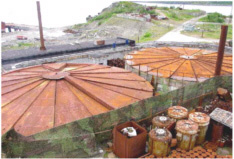
FIGURE 15 View of the rooftops of Buildings 2A and 2B of the spent nuclear fuel dry storage facility at the Andreeva Bay base.
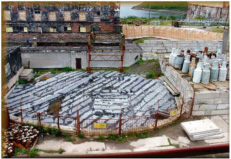
FIGURE 16 View of the concrete ceiling of Building 3A of the spent nuclear fuel dry storage facility at the Andreeva Bay base.
Coastal Servicing Bases in Andreeva Bay and Gremikha
The coastal servicing bases in Andreeva Bay and Gremikha had enjoyed a well-developed infrastructure and had been extensively used as venues for the servicing of active nuclear-powered submarines for decades. They included numerous storage facilities for spent nuclear fuel, various kinds of solid and liquid radioactive waste, and other service facilities and systems.
At present, the condition of the majority of coastal facilities is unsatisfactory. For example, at the Andreeva Bay base, temporary storage facilities for spent nuclear fuel (Figure 15, Buildings 2A, 2B, and Figure 16, Building 3A) were constructed in 1965 and were originally intended as storage facilities for liquid radioactive waste. From 1983 to 1986, they were modified to serve as temporary “dry” storage facilities for spent fuel assemblies. “Dry” storage facilities are designed for operation for six years. Today, precipitation seeps through the joints in the ceiling in Buildings 3A and 2B. There is water in some cells of the fuel storage facility. This can be partially ascribed to extended continuous operation, a lack of timely preventive repairs, and harsh climatic conditions.
The storage facility for spent removable blocks (Building 1B) at the Gremikha base was constructed back in 1961. It houses six spent removable blocks. Currently, the building is showing signs of sinking into the ground. Also, the walls and the foundation are cracked, and the roof is leaking.
The situation at such bases is exacerbated by the bases’ old age and the change of bureaucratic chain of subordination (in 2001, the bases were transferred from under the umbrella of the Navy to the Ministry of Atomic Energy). As
such, there is no exhaustive information on the radiological or technical conditions of the bases at present. This goes double for the spent nuclear fuel in storage at the bases. Some limited recent inspections of the fuel have shown that the condition of the fuel is extremely poor. Damage has been noted in fuel assembly wrappers and spent fuel assemblies themselves. Measured values of the specific water activity (107 to 108 Bq/liter) in certain cells of the storage facility imply a loss of structural integrity of the fuel assemblies’ cladding and, in all likelihood, some initial degradation of the fuel.
Removal of such fuel from storage is a complex engineering challenge. Detailed inspection of this fuel is further complicated by the elevated radiation exposure inside the facilities. The unsatisfactory and sometimes simply dire conditions of the coastal servicing bases illustrated in Figures 17 and 18 need no further explanation.
Analysis and characterization of the overall state of the disposition and rehabilitation items lead to the following conclusions:
-
The cumulative residual activity of spent nuclear fuel in the region equals 5.1 × 1017 Bq, and 137Cs and 90Sr account for more than 90 percent of it.
-
The cumulative activity ascribed to solid radioactive waste located in the region amounts to approximately 2.75 × 1016 Bq, and this number may substantially increase as rehabilitation activities at coastal servicing bases and disposition work on nuclear maintenance support vessels get under way.
-
The cumulative activity ascribed to liquid radioactive waste located in the region is roughly 9.4 × 1012 Bq.
-
There is a lack of trustworthy information regarding the numbers, types, and current conditions of spent nuclear fuels and radioactive waste at coastal servicing bases. For certain solid radioactive waste storage facilities, estimates may be off by as much as 100 percent.
-
The current condition of items subject to disposition and environmental rehabilitation unequivocally points to the need to complete the following pressing tasks:
-
Perform a comprehensive radiological survey of the “technical bases”;
-
Ensure the unsinkability of submarines during lay-up and transportation to ship repair facilities;
-
Set up an infrastructure which would allow placement of reactor compartments at a coastal long-term storage facility; and
-
Develop an infrastructure for the management of radioactive waste and set up a regional facility for reprocessing and long-term storage (disposal).
-
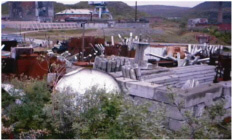
FIGURE 17 View of an open accumulation area for solid radioactive waste at the Andreeva Bay base.
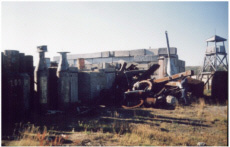
FIGURE 18 Storage area for solid radioactive waste in Gremikha.
ANALYSIS OF DISPOSITION AND ENVIRONMENTAL REHABILITATION ACTIVITIES
Section Three of the document provides a summarized analysis of ongoing disposition activities involving nuclear-powered submarines, surface ships with a nuclear propulsion system, and nuclear maintenance support vessels. It also describes the state of current rehabilitation activities at former Navy servicing bases.
In the course of work, the following was accomplished:
-
The end objectives of disposition and environmental rehabilitation have been formulated, in most general terms, for all types of items of interest.
-
Major guidelines and technological stages have been identified for operations involving nuclear-powered submarines, nuclear maintenance support vessels, nuclear-powered surface ships, coastal servicing bases, spent nuclear fuel, and radioactive waste.
-
The capabilities of all buoyant and shore-bound assets used for the removal of spent nuclear fuel have been reviewed. The production capacities of the facilities where sev-
-
ering operations and reactor unit formation take place have also been assessed.
-
The current status and capabilities of the production and technological assets required for the management of spent nuclear fuel and radioactive waste in the Murmansk and Archangelsk regions have been analyzed.
It needs to be pointed out, however, that the end objectives of the disposition and environmental rehabilitation of hazardous radioactive items have been formulated on the basis of a detailed feasibility study of the available options. The study was conducted at initial stages of the process by Russian research institutes subordinated to various umbrella agencies. Concept development rooted in the results of this analysis has essentially produced ways for Russia to strategically resolve these issues.
The SMP development process has made effective and advantageous use of international scientific, technological, and financial opportunities. It has also tapped into the results of additional research and brought new factual data into the picture. As such, the SMP provides an additional point of verification and, in some instances, corrects some individual premises of the above-mentioned concepts.
What makes the SMP fundamentally new compared to other Russian strategic-level documents are the SMP’s priority-setting methodology and the proposed priority listing that it yielded. The listing can serve as a starting point for the selection of specific high-priority projects.
The analysis presented in this section of the SMP provided the basis on which the end objectives of the dispositions of nuclear-powered submarines, surface ships, and nuclear maintenance support vessels have been formulated and assigned the justification rationale. Some uncertainty still remains with respect to the end states of the management of solid radioactive waste, damaged (defective) spent nuclear fuel, removable blocks (active zones) from liquid metal-cooled reactors, and the coastal bases.
The document does identify and present various options for resolving these problems, but additional specialized research will have to be performed before a final concept can be worked out. This is planned for execution during Phase Two of the SMP development process.
MAIN SOURCES OF RADIOLOGICAL AND NUCLEAR HAZARD UNDER CURRENT CONDITIONS
Section Four of the document sequentially looks at all main sources of actual and potential hazard while conducting multifaceted disposition and environmental rehabilitation activities. Three categories have been identified for all disposition and environmental rehabilitation items under review in the document. The categories take into account the radioenvironmental and any other risk that the items that they contain pose for the operating personnel, the population at large, and the environment. The categories are as follows:
-
The real risks stemming from the existing condition of disposition and environmental rehabilitation items;
-
Potential risks which are not associated with the technology involved in disposition and environmental rehabilitation activities; this category splits into two subgroups of risks: those that increase as time goes on and those that remain constant over time; and
-
Potential risks which are related to the technology involved in disposition and environmental rehabilitation activities.
Analysis of the main sources of hazard has shown that all disposition and environmental rehabilitation items do contribute, to various degrees, to all categories of risk in question.
The actual environmental risk for the operating personnel and the environment of the Russian Northwest lies mostly with such entities related to nuclear-powered submarine disposition at coastal servicing bases and ship repair facilities. The bases are sources of both radiation and radioenvironmental risks. The ship repair facilities are, on top of that, sources of chemical risks. In contrast, laid-up nuclear-powered submarines, reactor units, and civilian nuclear-powered vessels have virtually no appreciable effect on the radioenvironmental situation in those particular locations.
Coastal servicing bases have a great number of heavily contaminated areas (Figures 19 and 20) where the dose rate reaches 1 to 10 millisieverts per hour. Finally, the partially submerged nuclear maintenance support vessels contaminate the littoral area.
At the compounds of the servicing bases, the rate of β-contamination on the surface reaches 105 decays/min·cm2, and the concentrations of technogenic radionuclides in the soil reach 104 to 107 Bq/kg, i.e., many times the natural background and thousands of times the maximum allowable concentrations. Some contaminated areas have become sources of radiological contamination of the littoral areas and the outer sea.
The knowledge of the radiological situation at lay-up sites of nuclear-powered submarines and reactor units is limited; no radiation maps are available. However, the measured equivalent dose rate at control points does not exceed the natural background level; and the concentrations of the technogenic radionuclides 60Co and 137C in the soil equal 1 to 10 Bq/kg and 10 to 30 Bq/kg, respectively, which do not exceed 0.01 of the maximum allowable concentrations.
In the area where the Atomflot servicing and maintenance company has kept, for many years now, its nuclear-powered icebreakers and buoyant servicing boats Lepse, Imandra, and Lotta with spent nuclear fuel onboard, seabed sediments show the presence of 60Co at levels of 2 to 30 Bq/kg, 137Cs at levels of 2 to 40 Bq/kg, and 152Eu at levels of up to 55 Bq/kg. This is tens of times the natural background concentration but is still below the allowable concentrations. In the waters of the Kolsky Bay, the 137Cs concentration equals 5 to 8 Bq/
m3, which is the same as the natural background concentration. However, as early as back in the 1990s, trace concentrations of 134Cs (0.2 to 0.4 Bq/m3), 60Co, and 152Eu in seabed sediments point to their manmade origin. Fish caught at the outlet of the Kolsky Bay contain 137Cs at levels of 0.3 to 1.0 Bq/kg. These levels compare well with the concentrations of these elements in fish of the same variety (e.g., cod and haddock) in the Barents Sea.
The document carefully addresses the issues of environmental contamination associated with the operation of industrial facilities that carry out the disposition activities.
When submarines are cut up, an insubstantial amount of radionuclides (60Co, 90Sr, 137Cs, and 85Kr) is released into the air. Such releases do not exceed 10% of the accepted norms. Such amounts of radioactive substances have practically no impact on the facility-specific radiological situation, much less on region-wide radiation levels. The concentrations of technogenic radionuclides in the air do not exceed 105 of the respective maximum allowable concentrations.
Also, effluents of industrial plants dump a certain amount of radionuclides (60Co, 90Sr, and 137Cs) into the sea. As a result, their concentration in seawater and seabed sediments exceeds the normal background by a factor of 1.5 to 2 but quantitatively constitutes no more than 0.01 to 0.03 of the respective maximum allowable concentrations.
The fact of the matter is that nominal and accident-free execution of nuclear-powered submarine disposition activities does not violate the allowable concentration levels for technogenic radionuclides in the layer of the atmosphere closest to the ground and in seawater.
A much greater hazard to the environment, personnel, and the population at large lies with the harmful chemical contaminants involved in disposition activities.
This factor has been neglected for many years since public opinion tended to significantly overestimate the actual level of hazard represented by radiation. From the standpoint of the actual day-to-day reality of nuclear-powered submarine disposition activities, it is chemical contamination that is so much more hazardous for operating personnel and the population at large. Annually, these production facilities emit, in the form of an aerosol, 35 to 45 tons of various metal oxides. This results in the contamination of adjacent areas and broader surrounding territories. One of the most prominent sources of contamination is represented by processes related to gas cutting and severing of metal (Figure 21).
The disposition of one nuclear-powered submarine produces a large amount of chemical wastes (propellant and oil, ~40 tons; gaseous waste, ~2 tons; solid waste, ~600 tons). Only a small share of these wastes is utilized. Significant quantities of these wastes are not reprocessed or neutralized, so these potential sources of hazard pile up in depots and open storage areas.
The air in both indoor production shops and over the adjacent territory is filled with a lot of dust. At almost all corners of the facilities involved in nuclear-powered submarine disposition, the dust content in the air exceeds the maximum allowable concentrations by a factor of 1.3 to 6. Gas cutting of structural elements covered with red lead (minium)—and virtually the entire hull of a nuclear-powered submarine is painted with it—is associated with high concentrations of lead (13 to 60 times the maximum allowable concentration). Aerosols sometimes contain elevated concentrations of nickel (2 to 10 times) and other materials.
Some liquid waste gets dumped into the sea with waste-water. For example, the rainwater sewer system at the Zvyozdochka ship repair facility dumps chemical suspensions, oil products, and iron-containing compounds into the
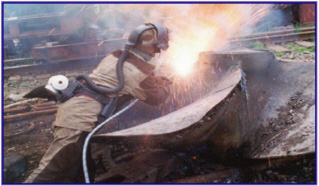
FIGURE 21 Severing of nuclear-powered submarines by gas cutting.
waters of the Nikolski Mouth of the Severnaya Dvina River at levels exceeding the maximum allowable concentrations. Forecasts show that unless corrective measures are taken, the increase in the scale of disposition activities expected in the next several years will result in the consistent contamination of air and seawater with selected pollutants at levels of up to three to five times the maximum allowable concentration. The issue needs to be addressed as early as today. Also, the first order of priority needs to be assigned to the problem of dust formation.
The document also features extensive data regarding every kind of potentially hazardous factor. The analysis of such factors identifies the most consequential contingencies for each type of site or disposition item. Also, mathematical modeling, cumulative damage assessment, and risks for operating personnel and the population at large have been done for the cases of such contingencies.
The analysis provided in this section of the SMP gives grounds for the following observations:
-
Multifaceted disposition activities do not cause any appreciable radiological impact on the population or the environment. At the same time, significant chemical contamination and hazardous waste buildup do result from submarine severing operations. The concentrations of harmful chemical substances in the air and seawater in the vicinities of ship repair facilities are several times the maximum allowable concentrations for sources of contamination.
-
The highest radiation hazard for the operating personnel is presented by activities with spent nuclear fuel and radioactive waste at the Andreeva Bay and Gremikha coastal bases, where some buildings, storage facilities, and outdoor storage spaces contain contaminated spots with elevated radiation levels.
-
The radiological potential of the spent nuclear fuel stored under unacceptable conditions at the Andreeva Bay and Gremikha bases is comparable to that of decommissioned nuclear-powered submarines subject to disposition. Given the intact condition of the containment barriers on nuclear-powered submarines with unloaded spent nuclear fuel, activities that will ensure the speediest possible development and implementation of projects that will lay a safe groundwork for the removal of spent nuclear fuel and that will allow the removal of spent nuclear fuel to be carried out need to be assigned the highest rank of priority.
-
The increase in the risk over time that a submarine will sink determines the degree of urgency assigned to the unloading of spent nuclear fuel from submarines which have been in the buoyant storage mode the longest.
-
The main source of actual and potential hazard is the spent nuclear fuel in storage on nuclear-powered submarines; at coastal bases; and on the civil nuclear fleet’s buoyant servicing boats Lepse, Lotta, and Imandra. Of these, the most concerning is the spent nuclear fuel located at coastal bases and on the Lepse.
A logical continuation of Tasks Three and Four was a review, within the framework of Task Five, of each of the items on the list of topical issues and “bottlenecks.” The issues and “bottlenecks” were identified on the basis of analytical assessments of many factors, which included, first of all, the safety and the logic of the technological processes.
At the current stage of SMP development, issues were identified through expert assessments done by leading specialists of Rosatom, the Russian Academy of Sciences, and other involved agencies. Also, the issues identified take into account the state of work, by action items and by main tasks, critical for implementation of the multifaceted disposition of nuclear-powered submarines, surface ships with a nuclear propulsion system, and nuclear maintenance support vessels, as well as for environmental rehabilitation of hazardous radioactive coastal sites.
Spelled out below are the main results of the “bottleneck” identification process, grouped by action item and in relation to individual disposition items and environmental rehabilitation sites under discussion.
Action Item: Disposition of nuclear-powered submarines, surface ships with nuclear propulsion systems, and nuclear maintenance support vessels
Of the main tasks essential for successful implementation of this action item (see above), the following have been identified by experts as critical issues:
-
Ensure the safe transportation of laid-up nuclear-powered submarines to facilities entrusted with disposition operations;
-
Set up a “groundtop” long-term storage facility for the reactor compartments of nuclear-powered submarines and surface ships with nuclear propulsion systems;
-
Resolve issues of management and reprocessing of spent nuclear fuel from liquid-metal coolant reactors on Alpha-class nuclear-powered submarines;
-
Set up a modern, high-capacity complex for processing, conditioning, and providing long-term storage for solid radioactive waste;
-
Resolve issues of the handling and disposition of the buoyant servicing base Lepse (which at present is in a critically defunct state);
-
Bring closure to the issue of handling defective and unreprocessable uranium-zirconium fuel in storage on the nuclear maintenance support vessels of the Murmansk Marine Shipping Company; and
-
Resolve issues related to the safe management and disposal of toxic wastes.
Action Item: Environmental rehabilitation of hazardous radioactive sites and facilities in Andreeva Bay and Gremikha
Under this action item, the absence of the following could legitimately be characterized as a critical issue which requires that strategic (i.e., corrective) decisions be made immediately:
-
Technology needed to ensure the safety of the operating personnel during whatever activities they are performing;
-
Reliable data on the amount, type, and condition of spent nuclear fuel and radioactive waste in storage at such sites;
-
Conceptual solutions for the management of the spent nuclear fuel (including defective spent nuclear fuel) in storage at such sites;
-
A final decision committing to the management of reactor fuel from Alpha-class nuclear-powered submarines;
-
The category of “very-low-activity solid radioactive wastes” in Russian legal, regulatory, and technical documents;
-
Clearly formulated and well-justified assessment criteria for describing the conditions of the buildings and compounds of coastal bases upon completion of rehabilitation activities;
-
Functional requirements and criteria for acceptance of radioactive wastes for final disposal;
-
A modern, high-capacity center for processing, conditioning, and storing solid radioactive waste;
-
An approved concept and decisions committed to selecting a type and location and conducting the requisite research and development and design activities for a regional disposal facility for final burial of low- and medium-activity radioactive wastes and for a storage facility for storage of high-activity waste; and
-
Physical protection that meets the present-day requirements.
Action Item: Ensuring external safety when performing multifaceted disposition activities with hazardous radioactive items and conducting environmental rehabilitation of hazardous radioactive sites
Problems of ensuring external safety are of systemic significance and have a bearing on all activities, sites, items, and tasks. It is abundantly clear that the reliable provision of a comprehensively safe setting is a prerequisite for undertaking any activities with items presenting a radiation hazard. Safety issues constitute the first order of priority and, as such, must be resolved as early as at the initial stage of engaging in large-scale disposition and environmental rehabilitation activities.
Among the most pressing tasks here are
-
Safe working conditions for the operating personnel involved in the disposition and environmental rehabilitation of hazardous radioactive items and sites;
-
The physical protection of valuable and radioactive materials; and
-
Radiation monitoring of the environment.
In the course of resolving the most important task—Task 6, which called for the creation of a methodology for priority-level justification and a rank-order listing of sites, items, pressing tasks, and priority activities—all the requisite data were collected through a combination of calculations, analyses, and expert assessments with the broad-based engagement of specialists from the scientific community and production and operations entities.
Implementation of specific projects selected on the basis of the listing of the most topical activities featured in the document will be conducive to the elimination of disposition-driven actual and potential sources of environmental hazard.
The results of the first phase of project work that has been completed ensure that the SMP—a living guideline for management of the investment in the nuclear disposition field—will be successfully completed during the second phase.
At all stages of its development, the SMP was being compiled in close collaboration with Russian agencies dealing with disposition issues. The list includes, first of all, the MINATOM (later on named Rosatom), complemented by EBRD experts and the International Expert Committee. Therefore, this document can justifiably be viewed as a product of international cooperation in science and technology; the sheer fact that it has been developed speaks to the effectiveness of the partnership between the Russian Federation and the international community in this critically important area.
The SMP was consecutively approved by the NDEP Nuclear Executive Committee (on November 5, 2004) and by the Assembly of Donor Nations (in December 2004). In addition, on December 1, 2004, the SMP came into force under the Rosatom Administrator’s Order No. 257. All of this secures the document a respectable legal status and gives hope for a qualitative improvement in cooperation among countries seeking to overcome the grim legacy of the Cold War.
The useful experience gained from the systemic approach to resolving such a huge problem as the disposition of nuclear naval vessels and the rehabilitation of radiologically hazardous sites in the Northwest region of the Russian Federation may also be applied in the course of international cooperation on many other problems.

















